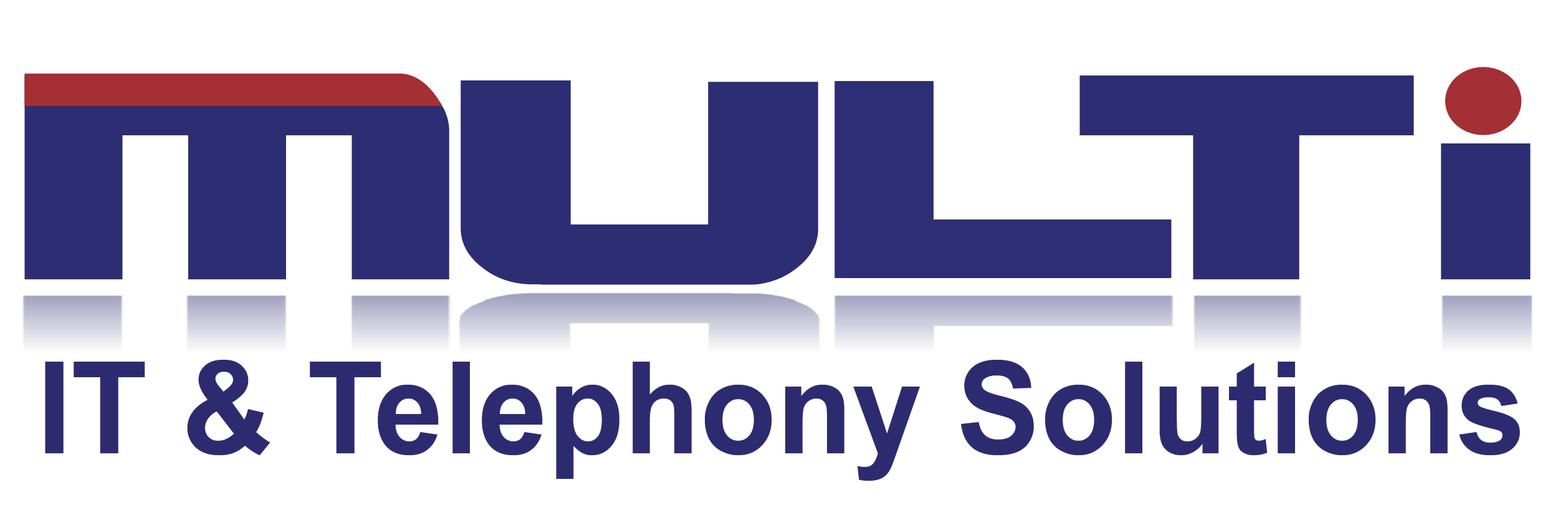Migrating your business operations to the cloud isn’t a decision you can avoid. If you’re not among the 96 percent of businesses that are already leveraging multiple cloud solutions, it’s time to recognize that the cloud is here to stay, and your business needs to plan your cloud strategy – one step at a time.
5 Essential Steps to Moving Workloads to the Cloud
Step 1: Consult with an expert
The first step toward successful cloud migration is to find an IT partner with a holistic approach who can architect a solution that serves your strategy, business needs and budget. As one of Microsoft’s Top 100 Partners, Multi is committed to Microsoft solutions, particularly Azure, Microsoft’s public cloud platform. Multi is one of a select few managed service providers with a dedicated Microsoft Partner Development Manager (PDM) to provide essential, exclusive resources for Multi IT & Telephony Solutions clients.
Step 2: Assess readiness
Assessing your readiness to move additional workloads to the cloud helps determine what parts of your operations will benefit the most from the transition. You don’t have to move all functions to the cloud all at once or at all – your needs may be met with a hybrid combination of on-premise and cloud solutions.
Our assessment also considers the anticipated ongoing costs. Metered cloud usage via Microsoft Azure allows businesses to pay as they go without incurring expenses for resources not currently being used. The assessment also determines if the timing is right for your business to begin moving new workloads to the cloud.
Step 3: Plan the cloud migration project
After assessing your readiness for this initiative, the next step is to decide how to execute your migration project. Will you have your in-house IT team take it on or would it be more streamlined to work with a consultant who has years of experience working in a wide variety of cloud environments?
Problems could arise if your IT provider has no experience moving functions to the cloud. Challenges with keeping staff working and moving forward with your business may result in unplanned or excessive downtime. We use a project sharing tool that allows users to see and collaborate on migration projects in progress, increasing efficiency across departments. Our process also means Zero Downtime during migration.
Step 4: Identify the right cloud solution
The cloud readiness assessment and project management decisions bring you to Step 4 – figuring out which cloud solution is right for you based on your industry, business size, future growth projections and desired outcomes. The three options include:
- Infrastructure as a Service (IaaS)
This is where you transition physical server and data centre assets to the cloud. You’re getting rid of your hardware, but still, managing your operating systems and software in the cloud. This option may include Rack space, Amazon EC2 and Microsoft Azure.
- Platform as a Service (PaaS)
You’re shifting operating systems and applications to the cloud, along with the management of those applications and systems. Planning is particularly critical if you choose this route. Examples are Microsoft Azur and AWS Elastic Bean Stalk.
- Software as a Service (SaaS)
SaaS is simply your applications in the cloud and reduces or eliminates the need for supporting infrastructure; applications are accessed through a browser. This could be Dropbox, Box, Microsoft Office 365, G Suite, QuickBooks and Salesforce.
Step 5: Determine how you’ll support your cloud
After completion of your cloud migration project, the management and maintenance of your cloud solutions can be self-supported in-house or through Multi IT & Telephony Solutions ongoing fully managed services, which include 24/7 monitoring, cyber security protection, integration with other applications, proactive troubleshooting, help desk support, data backup and disaster recovery as well as managing the overall health of the environment.
Where to start
Check off Steps 1 and 2 with a cloud readiness assessment by Multi IT & Telephony Solutions expert IT team. Contact us by phone on 011 435 0450 in Johannesburg, 021 879 1950 in Cape Town and 031 331 0735 in Durban or contact us online.

